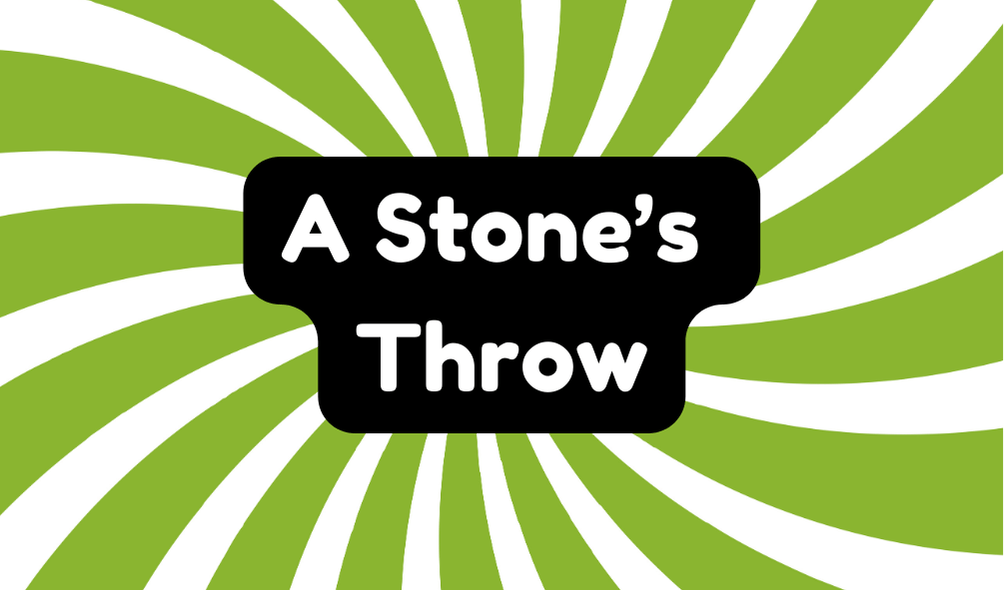The phrase "a stone's throw" signifies a short distance, suggesting things are close together. Its synonyms include "a hop, skip, and jump" and "a few steps away." Historically, it has biblical roots and emerged in common usage by the late 16th century. Overuse of this expression can lessen its impact, so it's wise to apply it thoughtfully. Understanding its nuances can improve communication. More insights await those who explore the phrase further.
Synonyms
When discussing the phrase "a stone's throw," it becomes evident that language is rich with alternatives that express similar ideas of proximity. Consider these three notable synonyms:
- A hop, skip, and jump – conveys a playful, short distance.
- Close at hand – suggests accessibility to nearby locations.
- A few steps away – implies ease of reaching a neighboring place.
While each term serves a purpose in describing short distances, their applications differ slightly, pushing users to think critically about the nuances of language. Understanding these synonyms enriches one's vocabulary and enhances communication regarding proximity.
Example of Sentences
Exploring the phrase "a stone's throw" naturally leads to its practical application in everyday language. This phrase can be effectively utilized in various contexts, including:
- Describing locations: "The café is just a stone's throw from the bus station."
- Expressing convenience: "The new gym is only a stone's throw away, making it easy to fit workouts into a busy schedule."
- Indicating relationships: "They live close enough for regular visits, just a stone's throw apart."
These sentence examples showcase its versatility, enhancing discussions about proximity. Consequently, a clear understanding of its practical application can enrich communication and foster deeper connections.
Origin
The origin of the phrase "a stone's throw" is intriguing, revealing a journey through both literal and figurative meanings. Historically traced to biblical passages, its cultural significance has evolved remarkably. Initially referencing the distance one could physically throw a stone, it found resonance in everyday language by the late 16th century.
| Era | Cultural Context |
|---|---|
| Early 1600s | Introduction of the phrase |
| 1700s | Revitalization by Jonathan Swift |
| Modern Usage | Represents proximity in broader terms |
This linguistic evolution captures shifting perceptions of distance and accessibility in society.
Collocations
Collocations related to the phrase "a stone's throw" shed light on its usage and the contexts in which it thrives. Understanding these combinations helps clarify its meaning in various scenarios, illustrating its role in communication. Notable examples include:
- "Just a stone's throw away"
- "Within a stone's throw"
- "A stone's throw distance"
These proximity expressions complicate language use, sometimes obscuring clarity. While idiomatic alternatives exist—like "close at hand"—the risk lies in overreliance on clichés. Such expressions can dilute originality, urging speakers to seek fresh ways to convey distance with precision and creativity.
How to Use in Everyday Language
To effectively incorporate the phrase "a stone's throw" into everyday language, individuals should consider the context and the audience's familiarity with idiomatic expressions. This phrase works well in everyday scenarios, illustrating proximity and ease of access. For instance, in casual conversations about local events, one might say, "The café is just a stone's throw away." However, one must recognize that not everyone may grasp its meaning. Therefore, it is vital to use it judiciously in conversational contexts. A clear understanding of the phrase enhances communication, ensuring it resonates with listeners while contributing to an enriched dialogue.
Why Is It Still Relevant Today?
In contemporary language, the phrase "a stone's throw" remains relevant as it succinctly captures the concept of proximity in a way that feels relatable and tangible. Its cultural significance lies in its ability to convey not just distance, but also accessibility in modern contexts, whether in urban planning or digital interactions. Today, it finds its place in discussions about sustainability, emphasizing closeness to resources or community hubs. While its origins may be ancient, the phrase adapts seamlessly to contemporary issues, reminding audiences that despite rapid innovation, simple concepts about accessibility and community bonds still resonate powerfully in everyday life.






